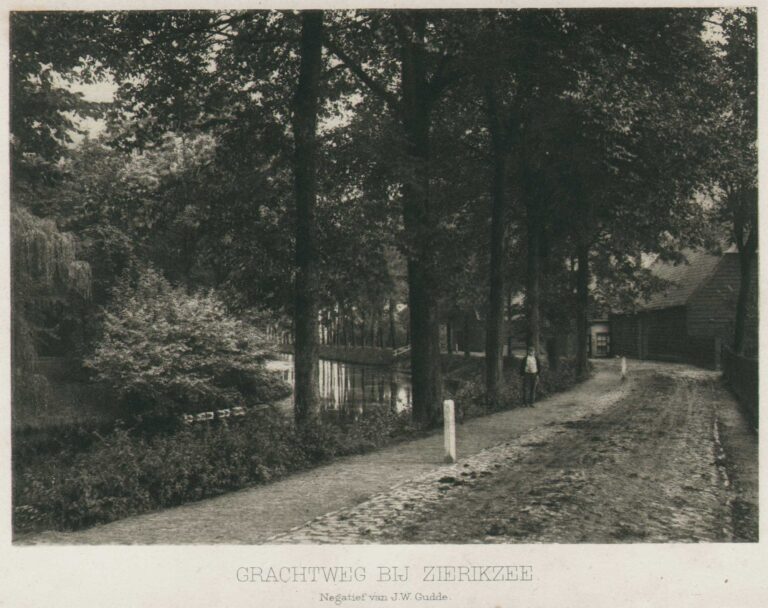
Midday
Dating to 1895, when it was first entered by Arthur Burchett into The Photographic Salon, his photograph shows sheep gathering in the shade of trees, with an open meadow beyond. The following insight for the composition was published in The Practical photographer, in an overview of the artist’s work from 1904:
The Mid-day Hour.–This title and picture are most happily wedded. At the moment of writing one longs to join the foreground sheep and share with them the umbrageous shade of their cool retreat. The glimpse through the opening in the trees shows us the palpitating heat and glare of the full noon sun, where dimly we perceive one or two members of the nibbling flock who are braving the warmth in search of an early dinner. In this instance we have an instructive lesson in the harmonious effect of a broad scheme of lighting. The grouping of the sheep in the foreground is happily caught. This picture re-iterates the valuable lesson of the foreground,–the foreground,–the foreground; and also shows that even with an interesting and well-arranged foreground we must also have a pictorial disposition of light and shade. (1.)
In The Mid-day Hour (210), which seems quite the best thing he show’s this year, there is the same want of something; the lighting is admirable, the figures pleasant and rightly placed. (2.)
Arthur Burchett: 1853-1927 (1875-1913)
Burchett was a painter as well as a photographer and argued the case for photography as an independent art with the same logic, conviction and dedication as Maskell in the 1890-94 period: “To me it seems that photography deserves to be considered a fine art for it possesses the two qualities which constitute art – it shows individuality and it is under the control of the mind. But to compare it with painting, where a man paints what he chooses, and how he chooses is absurd. Photography is well able to stand by itself; it owes nothing to any other art, but is entirely dependent, as they are, on nature, and it is folly to say that, because photography will not do what painting can, it is, therefore, not art. To put the matter plainly, it matters not whether you use a brush or camera, both are under control of the mind, and both are therefore, to be considered the work of the man. If the work is bad, who is to blame – the camera, the brush, or the man? (3.) (p.147)
The following additional biography is courtesy of The Feckless Collection: A Historical Collection of British Columbia Art:
Arthur Burchett was born on the 20th of August 1853 at Highgate, London, England. He was an artist who devoted his life to painting and to portrait photography. He was a student at the Royal Academy of Arts, London, exhibiting in the British Royal Academy from 1875 to 1900, the Dudley Gallery, London, The Royal Society of British Artists, and in Paris as well as other centres. He received medals in various parts of the world for his exhibits in photography. He painted in both oil and watercolor and concentrated mainly on landscapes. Arthur continued to paint, photograph, and teach in Canada. He maintained a studio for some years on College Street in Duncan. He later exhibited his work with the Island Arts and Crafts Society between 1914 and 1920, in 1926 he exhibited work at the Vancouver Exhibition. (4.) continues…
The Linked Ring
Arthur Burchett was a founder member on 27 May, 1892. His Pseudonym was Painter in Ordinary. He was a center link for a period in 1899. There is no record of his severance from the Linked Ring. (5.)
- The Pictorial Work of Arthur Burchett, The Practical Photographer, November, 1904, p. 4
- Excerpt: Photograms of ’95: Published for the Photogram, LTD. London: Dawbarn & Ward, LTD. p. 61
- Biography: Arthur Burchett: The Linked Ring:The Secession in Photography 1892-1910, Margaret Harker: 1979, p. 147
- Arthur Burchett, biography: The Feckless Collection: A Historical Collection of British Columbia Art
- The Linked Ring:The Secession in Photography 1892-1910, Margaret Harker: 1979, p. 181



